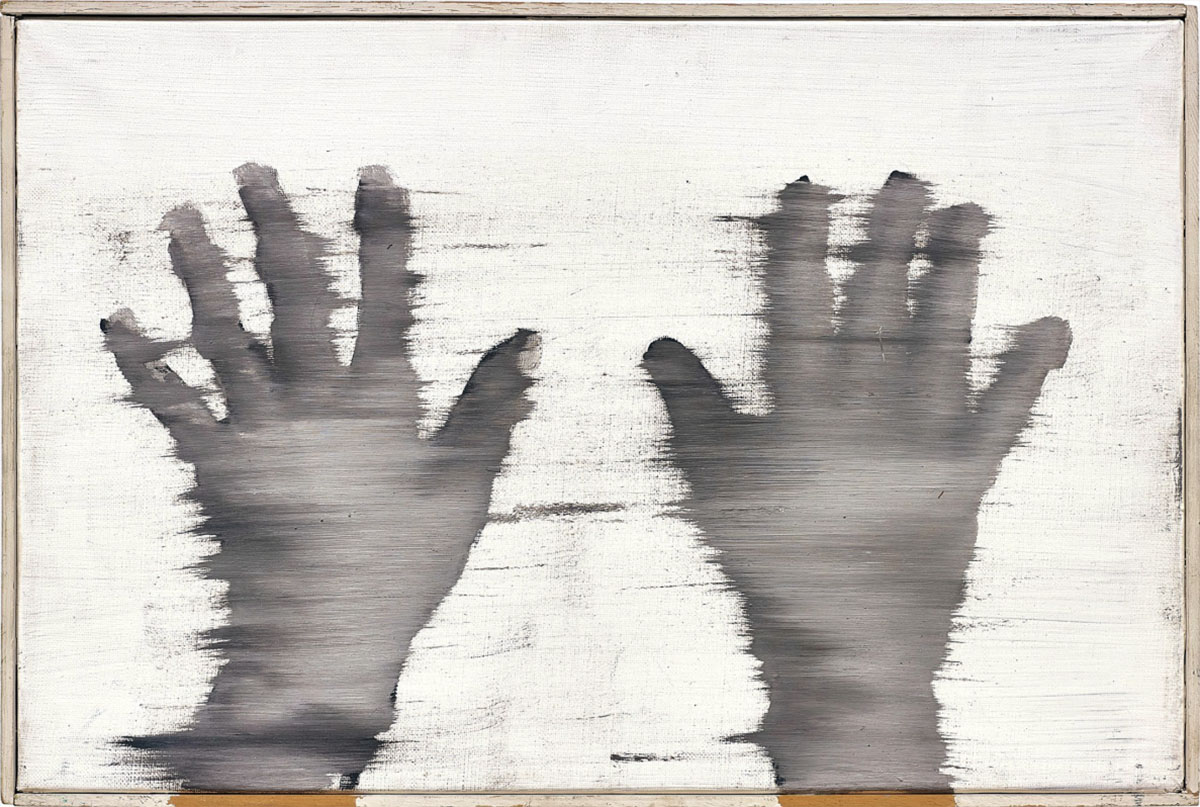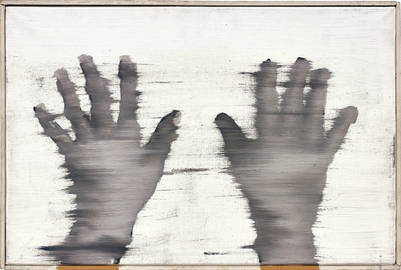
Known today as “the world’s greatest living painter,” Gerhard Richter’s paintings have spanned an astonishing range of styles and techniques, from photorealism to expressive abstraction. A founding member of the Capitalist Realism movement in the 1970s, Germany’s answer to Pop Art, Richter’s diverse practice responded to life in a divided, post-war Germany. But throughout his long career, he has also questioned the role of art, painting and representation in Postmodern, capitalist society.
Living Through War

Born in Dresden in 1932, Richter’s father was a teacher and his mother a bookseller. In 1935 the family moved to the small town of Reichenau. Richter’s father was conscripted into the German army during the war and held captive by Allied forces, an experience he never truly recovered from. Richter’s parents also lost much of their family during the war, and the young Richter was deeply shaken by their grief. By 1946, Richter’s family relocated to Waltersdorf on the Czech border, where they escaped bombings, but still fell victim to violent invasions.
Finding Art
In the aftermath of war Richter developed a fascination with art. After being given a camera from his mother, he learned how to develop photographs. He also began reading avidly and making drawings, although he had no intention of becoming an artist. Instead, he attended a vocational college, before finding work with a sign-making company. From here he became a theatre set painter in Zittau, a move which prompted him to apply to Dresden Art Academy. After his first application was rejected, Richter became a sign painter for the Dewag textile plant in Zittau, and eight months later, his second application in 1951 was successful.
RECOMMENDED ARTICLE:
Jackson Pollock, Famous American Painter & Artist
Life in Dresden

As a student in Dresden, Richter initially lived with an Aunt outside the city, before settling in an apartment with friends. Living on the same street was Marianne Euffinger, known as Ema, who Richter would go on to marry in 1957. Teaching at the academy was strict and rigorous, as Richter learned to make art through the academic copying of plaster casts and nude models. The institution also pushed Socialist Realism, promoting a positive, idealistic vision of East German life. Richter chose to specialize in mural painting, gaining a number of prominent commissions after graduating. But he was fascinated by life in West Germany, making several trips during the 1950s to Berlin.
Dusseldorf Academy

In 1959 Richter visited the exhibition documenta II in Kassel, where he saw artworks by Jackson Pollock, Jean Fautrier and Lucio Fontana, opening his eyes to a new way of seeing. With Ema, he moved to West Germany in 1961. They chose to settle in Dusseldorf, where Richter began studying at Dusseldorf Academy. There Richter was taught by Joseph Beuys and absorbed ideas relating to the Fluxus movement. In the class of Karl Otto Gotz, Richter met lifelong friends in Signmar Polke, Konrad Fischer and Blinky Palermo. Together they organized a series of experimental pop-up events and exhibitions influenced by Pop Art, but with a sardonic irony, which they called Capitalist Realism, a play on Capitalism and Socialist Realism. They also defined themselves as Germany’s first Pop artists.

Photorealism

Richter’s paintings during this time were engaged with current affairs, consumerism and popular culture. He repainted found photographic imagery to lend it an eerie, sinister edge, as seen in Party, 1963. Themes of death, war and destruction were recurrent, alongside banal, commercial subjects that deliberately ridiculed consumerism. This link between photography and painting became a vital strand of Richter’s practice, particularly his trademark “blurring” technique.
Exploring Many Styles

In the 1960s Richter’s subject matter became increasingly diverse. He made colour charts, painted nudes, aerial townscapes, city views and mountain ranges – uniting these various strands was a questioning of the role painting could have in contemporary culture and the relationship between painting and photography. In the 1970s he began making abstract paintings with vibrant, dazzling colours that introduced elements of chance, titled Abstraktes Bild (Abstract Painting), exploring qualities of space, form and light, yet with the same luminosity and hazy blurring as his photorealist paintings.
Later Years

Richter separated from his first wife Ema in 1979 and began a relationship with artist Isa Genzken, who he married in 1982. Together they moved to Cologne, where Richter made his most famous, politically engaged set of paintings, October 18 1977, 1988. After separating from his second wife some years later, Richter married the artist Sabine Moritz. Serene, abstract subjects have since followed, although they often mask hidden political content, while the blurring effect of earlier, photographic paintings has remained at the core of his practice.
Auction Prices





RECOMMENDED ARTICLE:
A Brief Timeline of 20th Century Visual Art Movements
Did you know?
Gerhard Richter’s family had connections to the horrors of the Holocaust on both sides. His uncle was a Nazi officer, while his father had only joined the party out of fear. Meanwhile, Richter’s Aunt Marianne, a diagnosed schizophrenic, was starved to death by the Nazi programme.
Richter was fired from one of his first jobs as a set painter when he refused to make a wall painting on the theatre staircases.
Richter is a meticulous and tidy worker; his art studio is said to be spotless and he has a strict, regimented working routine.
Richter let the band Sonic Youth use his painting Kerze I (Candle I), 1988, for the cover of their album Daydream Nation because he is a huge admirer of their music.
On the day of the September 11 twin towers attack, Richter was on a plane flying to New York, but his plane was diverted to Halifax. He later made artwork in memoriam of the attacks.
One of the highest-paid artists in the world, Richter’s paintings sell for millions of dollars, although he claims he has little interest in their market value.
Despite his fame, Richter is notoriously camera-shy. He reluctantly appeared in a short documentary film directed by Corinna Belz titled Gerhard Richter’s Window in 2007, but only because he was the subject of the film.
Richter has been married three times and has four children. He has often made sensitively observed portraits of the family in his paintings.
Richter designed a 66-foot-tall stained-glass window at Cologne Cathedral in 2007.
Among the famous figures Richter painted, he made 48 portraits of the renowned author Franz Kafka.










